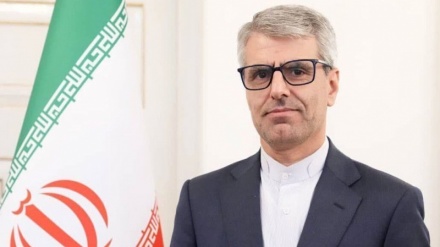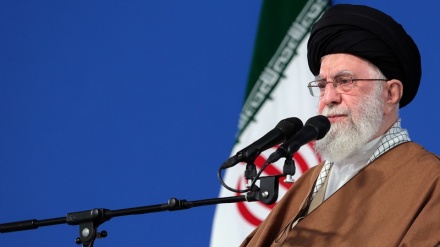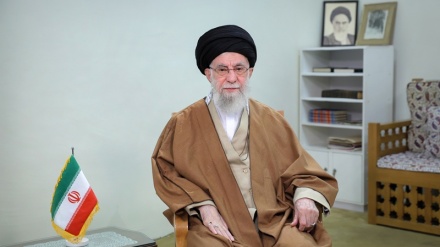Nowrouz (6)
Nowrouz is one of the oldest festivities in the world. It symbolizes new birth and new growth in nature. It symbolizes natures’ revival and resurrection. Nowrouz has stood the test of time, because it is so closely linked to nature and to spring, it is also closely linked to love, kindness and hope.
Since the earliest times, humans were aware of “the cycle of nature”; the fact that seasons are periodic or cyclical. The Almighty God in several verses in holy Qur’an has advised man to go to the nature and see how He makes the signs of Allah’s rebirth in the seasons and nature. In ayah 20 of Surah Ankabout we read:
“Say, ‘Travel over the land and then observe how He has originated the creation.’ Then Allah shall bring about the genesis of the Hereafter. Indeed Allah has power over all things.”
In the book “Asma ul-Alam” written by the celebrated Iranian Islamic thinker and philosopher, Allameh Mohammad Baqer Majlisi some four centuries age, a narration from Imam Ja’far Sadeq (AS), the 6th Infallible Heir of Prophet Mohammad (SAWA), says that the Father of the human race, Adam (AS) was created in the first day of Farvardin and this day is an auspicious occasion to perform prayers to Almighty Allah for achieving our expectations.
The famous scholar of Lebanon, Abdus-Samad ibn Ali, who flourished several centuries ago, has recorded in his works that once during Nowrouz, a plate of ‘halvah’ or sweet was offered to the Prophet of Islam. Although, the Prophet, by the Will of God, knew everything, in order to awaken the conscience of his companions, he asked to which tribe it belonged and what was the occasion? The reply was: This is a gift from Persia marking Nowrouz, the greatest Iranian festival. The Prophet replied: Yes, once on this day Almighty Allah revived the dead and ordered the clouds to rain; hence sprinkling of water became a custom this day. The Prophet of Islam then ate the halvah sharing it with his companions.
The observances of Nowrouz lie in the agricultural communities of ancient Iran. Iranian farmers needed to know when to sow their seeds, and when to harvest their crops. It was essential for them to know when the seasons start, and in particular, when does spring start. Thus the “agricultural calendar” was calculated approximately by farmers of ancient times. Their job was closely linked to the start of various seasons, such as spring, summer and autumn. Thus the agricultural community of ancient Iran chose to celebrate the first day of spring -- which begins with the vernal equinox – and called this day Nowrouz. On an equinox, day and night are of approximately equal duration, no matter where you happen to be on Planet Earth. For many centuries, Nowrouz was essentially an agricultural festivity, but since much of the population of Iran was engaged in farming, Nowrouz became a national holiday in Iran – if you like the Iranian people’s choice for a national holiday or festivity. Historians tell us that Nowrouz is actually older than the Elamite civilization of western Iran. This means, Nowrouz is also older that the Achaemenid dynasty, which borrowed the observance of the Spring Equinox for the astronomically advanced Babylonians, and then named it Nowrouz, thereby completely Persianizing it.
Nowrouz coincides with the vernal equinox, when night and day become of equal duration. After the vernal equinox, that is the first day of spring, the days become gradually longer, and the nights shorter. Symbolically, this represented the victory of light and goodness over darkness and evil. Thus ancient Iranians considered Nowrouz as the day of victory of light and warmth over darkness and coldness. In the final weeks and days of the year, Iranians traditionally clean their homes thoroughly, and dust-off everything within their homes. They clean up ready for the arrival of the New Year. This “spring cleaning” is very much part of Nowrouz. They also cultivate various grains and cereals such as wheat, barley, and lentils, in small dishes, in the final weeks of the year. They will then place these “green shoots” on the traditional Haft-Sin table ready for Nowrouz. One of the great traditions of Nowrouz is to set the Nowrouz table, or the Nowrouz spread. This is also known as setting the Haft-Sin table or the Haft-Sin spread. According to this ancient tradition, all members of an Iranian family gather round the Haft-Sin table or Haft-Sin spread, in the family home, as the clock chimes-in the New Year. Traditionally, on a white table cloth, seven fruits, vegetables or agricultural products are placed , all of them beginning with the letter ‘s’ in Farsi or Persian. These seven agricultural items represent the great variety of fruits and vegetables which are grown by Iranian farmers, i.e. these seven items represent the bounties of agriculture, and the blessings of the Lord. On the Haft-Sin table, we usually find Sib (apple) Sabze (green shoots), Seer (Garlic), Serkeh (Vinegar), Samanu (a sweet cooked dish made up of wheat germ), Somagh (Sumac) and Senjed Russian olive. It is a type of fruit).
Additionally, other items are placed on the Haft-Sin table, which don’t begin with the letter Seen or ‘S’, such as the Holy Qur’an, a mirror, candles, a bowl of water, goldfish in water, bread, flowers, rosewater (or petal water) eggs which have been painted with various colours and designs, coins, and Sonbol (hyacinth ) which actually begins with letter ‘s’ in Persian or Farsi.
There are many speculations as to why seven items were chosen for the Haft-Sin spread. Some researchers have suggested the seven items represented the many different seeds which Iranian farmers sew each year, on a trial basis, to see which ones produced the best crop. For example, the famous Iranian Islamic scientists, mathematician, astronomer and historian, Abu Reyhan Birouni, has explained in his book, Athar al-Baqiyah an al-Qoroun al-Khaliyah (or Chronology of Ancient nations and Vestiges of the Past), the origins of the seven items chosen for Haft Sin. Abu Reyhan Birouni writes: “Every Iranian used to sow barley seeds as a sign of good tidings, in a large pot, in his or her home, as Nowrouz approached. Then this ritual became a tradition for the Iranian people. On the day of Nowrouz, every Iranian planted seven types of seeds (or cereals and grains) in seven cylindrical pots, near their home, and from the growth of these edible plants (cereals, grains, vegetables and fruits) they tried to assess that year’s harvest”.
As the New Year approaches all members of an Iranian family gather in the family home, next to the Haft-Sin spread or table. Candles and lamps which are on the Haft-Sin spread are lit up before the arrival of the New Year. Then it’s time for prayers as the New Year approaches. When the New Year begins, all members of the family congratulate one another by saying: “Eid Mubarak”, which can be translated as “the blessings of New Year” or “a happy and prosperous New Year”. Younger members of the family kiss the hands of the elder members of the family, and the elders usually kiss the faces of the younger ones. Then the eldest member of the family recites the special prayer for the New Year, and all other members of the family repeat after him:
“O Rotator of hearts and eyes. O Regulator of the day and night, O Transformer of state and situations, Turn our state, into the best of conditions”.
The Leader of the Islamic Revolution, Ayatollah Seyyed Ali Khamenei, has commented on the special New Years’ prayer. The Leader has said: “The arrival of each new Iranian solar hijri year, which coincides with the coming of spring and the transformation (and revival) of nature, is an opportunity for each one of us to transform ourselves, to transform our inner selves, to reform and rectify our spiritual, intellectual, material and every-day affairs. The wonderful and blessed prayer which we have been taught to recite as the New Year arrives, is really about this transformation, reform, and change. In this blessed prayer, we ask the Lord to bring about positive change -- a positive transformation -- in our spirit and inner being. Change and transformation is the work of the Lord Most High. But we too, have a duty, to strive to bring about change in our lives and within ourselves. If and whenever we change for the better, our lives will change for the better as well. Whenever there is a major transformation within ourselves; then there is bound to be a major transformation in our lives”.
Traditionally, after the arrival of the New Year, Iranians generally want the first person to step into their home to be someone of cheerful appearance, someone who is known for his good deeds and good intentions. This will bring them prosperity, health, energy, and blessings for the New Year.
There are also special theatrical performances, and special sporting events in the first twelve days of Nowrouz. Such special sporting events include wrestling matches, for example. On the thirteenth day of Nowrouz, Iranians traditionally go outdoors, and spend the day “in nature”. They throw the “green shoots” which they have grown themselves for the Haft-Sin table into a running stream, or river, or spring etc. This symbolically represents new life in the New Year.


